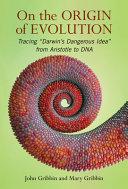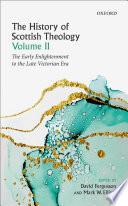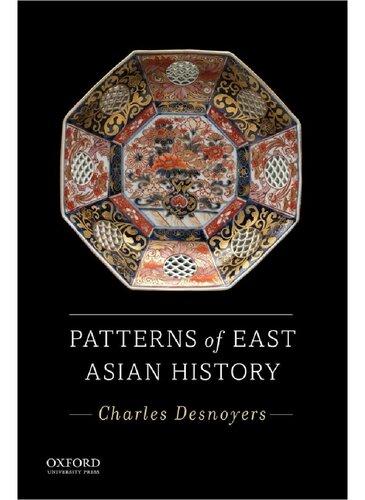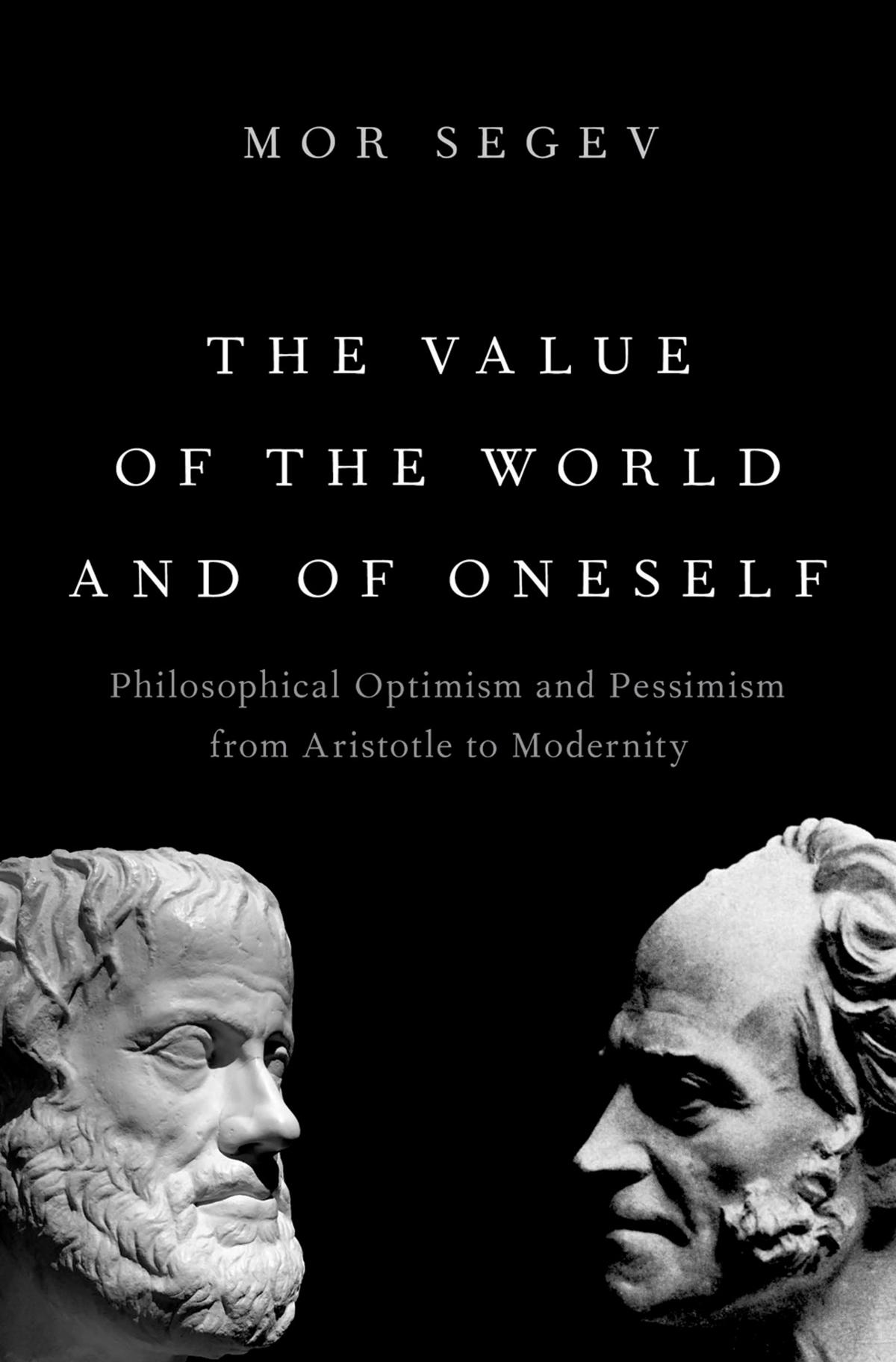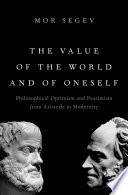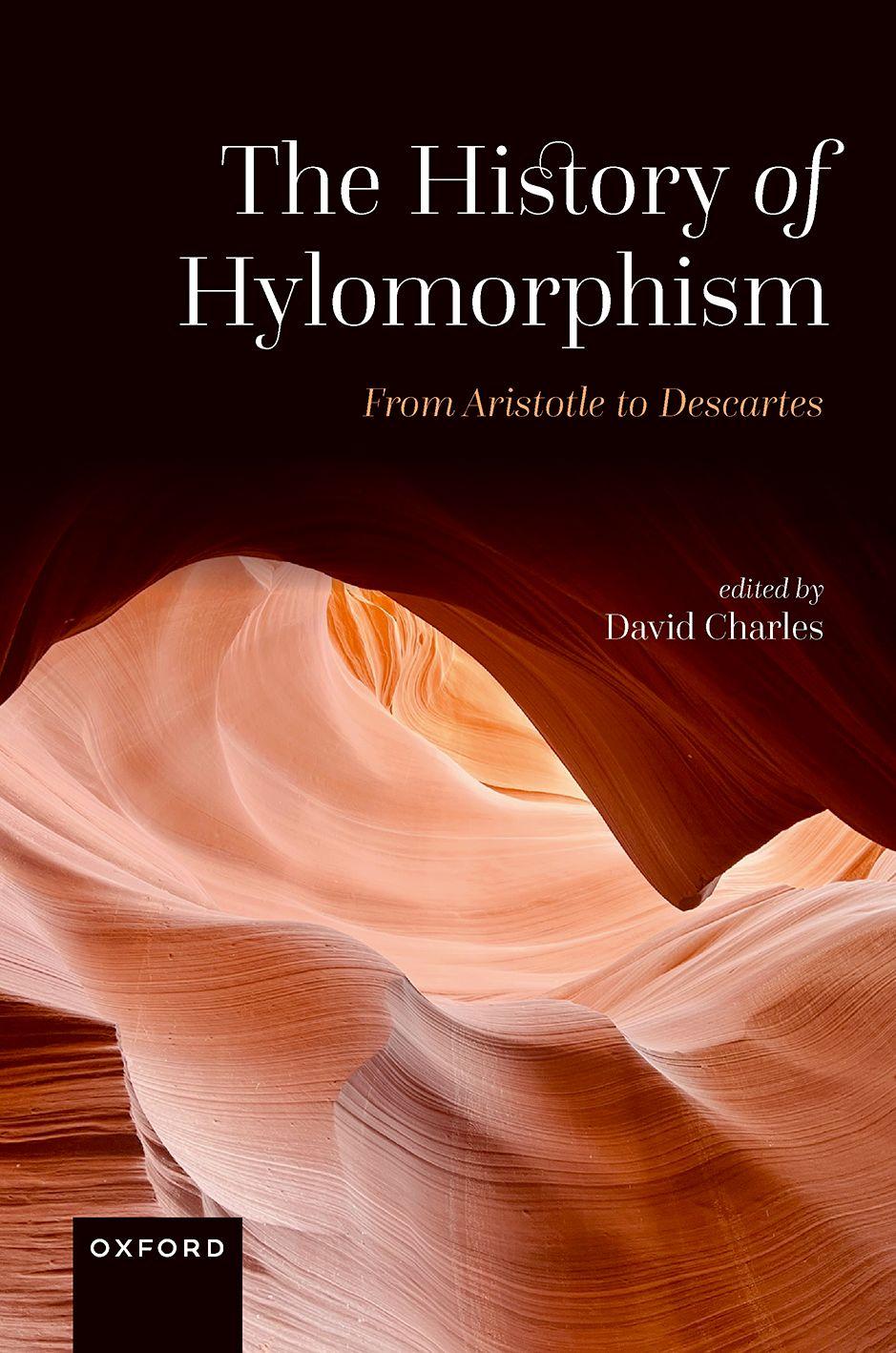AnIntroductiontotheHistory ofHylomorphism
FromAristotletoDescartes
DavidCharles
1.TheFirstSteps
AlthoughAristotlewasnotthe firsttounderstandobjectsintermsoftheirmatter andtheirform,theaccounthedevelopedhasexercisedamajorinfluenceon westernphilosophytothisday.Intheinterveningtwoandahalfmillennia,ithas beenwidelyusedtoaddressissuesinmetaphysics,aesthetics,ethics,political philosophy,andthephilosophyofmind,includingtheproblematicrelation betweenthemind,orpsychologicalstatesmoregenerally,andthebody.
Aristotleproposedthatnaturalsubstances,includinghumans,andartefacts, suchasbronzespheres,arebestseenasmadeupoftheirmatter(hulē)andtheir form(eidos)orshape(morphē).Hisapproach,whichbuiltonsomeofPlato’ s earliersuggestions,cametobedescribedas ‘hylomorphism’ becauseitsoughtto accountforcertainfeaturesoftheseobjectsintermsoftheirmatter(hulē)and theirform(morphē).
Thepresentcollectionofessaysconsidersaspectsofthe first2,000yearsofthe historyofhylomorphism,startingwithAristotle’simmediatesuccessorsand endingwithDescartes.Someofthewriterstobestudiedsawthemselvesas followingAristotle ’sownaccount,othersaschallengingitandarticulatingalternatives,stillothersasmodifyingittoaccommodatehislatercritics.However,all wereengaged,whetherasopponentsordefenders,withhisviewpointasthey conceivedit.Hylomorphism,asweunderstandittoday,owesagreatdealtothe wayinwhichitwasinterpreted,andreinterpreted,duringthisperiod.
TomakeAristotle’soriginalsuggestionmoredeterminate,consideroneofhis examples:thatofasphereorballmadeofbronze.Inhisview,thebronzein questionisitsmatter,itsdistinctiveroundshapeitsform.Itsbeingcirculariswhat makesthisobjectasphere.Thebronzecouldhavebeenmouldedtomakedifferent objects,suchasabronzecubeortriangle.Oritcouldhavebeenleftasalumpof bronzewithoutanyoftheseshapesbeingimposedonit.Wereittobemelted downorcutintwo,itwouldceasetobeasphere.
DavidCharles, AnIntroductiontotheHistoryofHylomorphism:FromAristotletoDescartes In: TheHistoryofHylomorphism: FromAristotletoDescartes.Editedby:DavidCharles,OxfordUniversityPress.©DavidCharles2023. DOI:10.1093/oso/9780192897664.003.0001
2
Thebronzesoshapedis,inhisexample,aunifiedobject:thisbronzeball.Itis notacollectionofdifferentobjects,stilllessaheapofdistinctbitsofmatter.Were ittodisintegrateintobronzefragments,itwouldceasetobeoneunifiedobject.Its shape,beingcircular,makestheobject,madeupofbronze,aballandaunified object.¹
Theshapeoftheballplaysafurtherrole.Itisbecauseitisroundthattheball rollsinthewayitdoes.Itsshape,beinground,explains,oratleastispartofthe explanationof,whytheballmovesinthisway.Itsform,inAristotle ’sterminology, causesroundobjectstoactastheydo.
Somuchforasimpleexample:Aristotleattemptedtounderstandnatural substances,suchasparticularhorsesorparticularhumans,insimilarterms. Theytooaremadeup,insomeway,oftheirmatterandtheirform.Inthecase ofhumans,otheranimals,andplants,heidentifiedtheirformwiththeirsoul, whatmakesthemlivingbeings,theirmatterwiththeirbodies(oritsingredients).
What,inmoredetail,wasAristotle ’shylomorphicaccountfornaturalsubstancesandartefacts?Howwasitunderstoodbylaterwriters?Thepresentvolume addressesthesetwoquestions,focusingespeciallyonthecaseofnaturalsubstances.ItdoesnotconsiderAristotle’sattempttoextendhisaccounttoawider rangeofentities,includingmathematicalandgeometricalobjects.
2.Aristotle ’sTheory:WhatIsClearandWhatIsUnclear
Aristotle,itwouldbegenerallyagreed,aimedtosaywhatmakesaparticular object,suchastheparticularhumanorbronzeballbeforeus,theobjectitis.His answerinvolves,inhisterminology,its ‘formalcause’:itsform(orshape).Itwould furtherbegenerallyagreedthat,unlikePlato,hethoughtthatsuchformshaveto beinstantiatedinmattertoexistastheformstheyare.Plato,bycontrast,heldthat therelevantformscouldexistwithoutbeinginstantiatedinmatter.²
Mostwouldalsoacceptthat,inAristotle’sview,theformsofnaturalsubstances arethestartingpoints(or ‘efficient’ causes)ofvariousmaterialprocesses.They differfrommathematicalorgeometricalformswhichdonothavethecausal powertomovematerialobjects.AsAristotleputit: ‘mathematicaltrianglesdo notcut’.³Healsoclearlythoughtofformsandmatteras,insomeway ‘parts’ ofthe compositeobject.⁴ Inaddition,hecalledhisforms energeiai,variouslytranslated asactivitiesoractualities. ⁵
¹See Meta. H.6,1045b19ff;itissimilartosearchforthecauseofitsbeingonethingofacertaintype anditsbeingonething.
²ForAristotle’sperspectiveonPlato’sandSocrates’ accountofforms,see Meta. M.9,1086b1–13.
³ DeCaelo Γ.8,307a17ff. ⁴ Meta. Δ.25,1023b17–22.
⁵ See,forexample, Meta. Θ.8,1050b2.Fordiscussionofthebesttranslationof ‘energeia’,seeBeere (2009).
Itwouldbewidely,althoughnotuniversally,agreedthatAristotleusedtalkof ‘form’ (or ‘formandmatter’)inseekingto explain theexistenceandnatureof naturalsubstancesandartefacts.Hedidnot,thatis,takeparticularcomposite objectsasexplanatorilybasicandusetalkof ‘matterandform’ toelucidateaprior andmorebasicitem:theparticularballorhumaninquestion.Formandmatter were,inhismetaphysicalpicture,explanatorilymorebasicthantheobjectsof whichtheyare,insomeway, ‘parts’ .
Sofar,perhaps,sogood.Butmanyquestionsremain.Whatexactlywas Aristotlelookingforwhenaskingwhatmakesthisparticularhumantheobject itis?Wasit
(a)Whatmakesthisobject ahuman (asdistinctfromahorse)?Whatis essentialtoitsbeingahuman?
(b)Whatmakesthisobjecta unity?Whatmakesthisparticularhumanone unifiedobjectasopposedtoaparticularcollectionofdistinctbodyparts? [Unity]or
(c)Whatmakesthishumanthe particular humanitisasopposedtoany otherhuman?[Particularity]
Washetryingtoansweralloronlysomeofthesequestions?Washisfocus, perhaps,confinedto(a)and(b)?Ordidhealsoconsider(c)?Wereallhisanswers expressedintermsofformalone?Ordidhealsorefertomatter,eitherinaddition toformorbyitself,inaddressingsomeorallofthem?
Whenwebegintoraisequestions,others floodin.Someconcernthenature oftheformsthemselves,othersmatter,stillothersthewaysinwhichmatter andformcombinetomakeaparticularnaturalsubstanceorartefact.Here areafew:
(i)Whattypeofentityisaform?Towhatontologicalcategorydoesit belong?Isit,forexample,anobjectorafeatureofanobject?Orthe memberofanirreduciblydistinct, suigeneris,category?Howareweto understandAristotle’stalkof ‘activity’ or ‘actuality’?Dothesetermsrefer, forexample,toaball’sshapeorstructureorcapacity?Ortoitsrolling?Or itsbeingcapableofrolling?Isoneofthesereferredtowhentalkingofthe formofahumanbeing?
(ii)Canthesameformbesharedbydistinctobjects?Oriseveryform uniquetotheparticularobjectthatpossessesit?Ifitisunique,howis itindividuated?Cantheverysameobjecthavebothauniqueanda sharedform?Ifso,isoneofthesetypesofformmorebasicthan theother?
(iii)Evenifformscannotexistwithoutmatter,aretheformsofnatural substancesandartefactstobede finedinwayswhichexplicitlyreferin
4
theirdefinitiontomatter?Orcantheybedefinedwithoutanyreferenceof thistypetomatter,eventhoughtheycannotexistunlessinstantiatedinit?
(iv)Canthematterinquestionexistwithoutthisform?Canitbedefined withoutreferencetotheforminquestion?
(v)Towhatontologicalcategorydoesthematterinquestionbelong?Isitalso anobject?Oraquantityofstuff?Orafeatureofanobject?Whatis intendedbyAristotle’sassociationofmatterwith ‘capacity’ or ‘potentiality’ (dunamis)?Ismatteritselftobeunderstoodasacapacityofsomekind oraswhatiscapableinthisway?
(vi)Howaretheformandthemattercombinedincompositeobjects?Inwhat wayaretheyboth ‘parts’ ofthewhole?Doestheform,forexample, ‘ supervene ’ (orinsomeway ‘rest’)onthematterinquestion?Doesthe formmakethematterthetypeofmatteritis?Orboth?
WhilethereisongoingscholarlydiscussionaboutAristotle’sanswerstothese questions,mostinterpretersagreethatheaimedtoaddressallormostofthem usinghishylomorphictheory.
Itisclear,attheoutset,thathefacedseriousproblemsindoingso.Thisis,inno smallmeasure,becausehewas,orsoitseems,committedtoseveralclaimswhich aredifficulttoholdtogether.Heheldthat:
[A]theform,inquestion,ispriorindefinitiontothecompositeobjectandto itsmatter[PRIORITY],⁶
[B]forms(orpossiblyformsandmatter)underwritetheunityofthecompositeasahumanbeingorasabronzeballasoneunifiedobject[UNITY],⁷ [C]thematterinsomeway ‘underlies’ theform.Thereis,itmightappear,a trueupwardsstorywhichbeginswithmatteratsomelevelandendswith atypeofmatterwhich(insomeway) ‘underlies’ form.[UPWARDS STORY],⁸ and [D]formsarethebasicefficientandteleologicalcausesofmaterialchanges [CAUSE].⁹
Ishallconcentrateontwodifficultiesthatarose,focusingonasubclassof naturalsubstances,livingbeings,andleavingasideotherssuchas fireorwater.
⁶ Meta. Z.3,1029a5–7. ⁷ Meta. H.6,1045b19ff.
⁸ Formatterasthatwhich ‘underlies’ form,see,forexample, Phys. 191a9ff.ForAristotle’sviewson matteratvaryingstagesofdevelopment,see Meta. Θ.7,1049a24–8.Hediscussestheseissuesinmore detailinhisbiologicalwritingsandinhisworkongenerationandcorruption.Onthesetextsand relatedissues,seeFurth(1988);andCharles(1988).
⁹ See Meta. Z.17,1041a29f,and DeAn. Γ.4,415b10–12,onthesoul.Theyare,inAristotle’ s terminology, perse causes.
3.TwoDifficulties
(1)Aristotle’scommitmenttoPRIORITYmightseemtorequirehimtodefine theformsinquestionwithoutexplicitreferenceintheirdefinitiontomatter.His forms likePlato’ s willthenbewhatIshallcall pure.¹⁰ However,ifthiswashis view,hewouldneedtoshowhowsuchformscanbethebasicefficientcausesof materialchanges.Cantheybethestartingpointsandcontrollersofmaterial processes?¹¹Orarethey likemathematicalforms causallyinert?However,if underthepressureofCAUSE,Aristotlemustdefineforms,likeotherefficient causes,asintheirnatureenmattered,itisdifficulttounderstandhowtheycan bedefinitionallypriortomatter,asPRIORITYrequires.Theymightseemtobe propertiesofmatterortodependfortheiridentityonrelationsbetweenbitsof matter.Howthencantheybedefinitionallypriortomatter?
Thereis,itseems,adilemma: either theformsoflivingbeingsaredefinitionally priortomatterandcausallyinert or theyareefficientcausesofmaterialchanges butnotdefinitionallypriortomatter.However,Aristotleseemstohavethoughtof them both asdefinitionallypriortomatter and asefficientcausesofmaterial change.Didhe findawaytodoso?
(2)Aristotle,itappears,soughttomaintainthedefinitionalpriorityofthe formofalivingbeingbydefiningitsrelevantmatter(atsomelevel)intermsof thatform.Indeed,thismayhavebeenpartofhisattempttounderwritetheunity oftheresultingmaterialbody.Itsmatterwillbedefinedaswhatisarrangedsoas tounderlietherelevantform.However,ifthishowAristotlespelledouthisclaims concerningPRIORITYandUNITY,whatkindofupwardsstorycouldhetell? Howdidhedevelop[C]?Ifmatteritselfistobede finedatsomelevelintermsof itscapacitytounderlietheformofthelivinganimal,howismatter,sodefined, connectedtoanylowerlevelofmatter,notdefinedintermsofthiscapacity?
Thereseemtobetwoanswerstothelastquestion. Either matteratthelower levelisdefinedindependentlyoftheformofthelivinganimal or itisnot.Ifitis,at somelowerlevel(whereverthatis)thehigherlevelforms(suchasbeingaliveasa human)andmatterdefinedasthusenformedwillinsomewayrestonmatter definedindependentlyofthem.¹²However,ifthiswasAristotle’sview,hewas,it seems,committedtothepresence atsomelevel oftwodistinct,independently defined,typesofmaterialcomponentsinoneunifiedobject.Buthowthenisthe resultingobjectitselfaunifiedobject,notacollectionoftwoormoredistinct entities,eachwithitsowndistinctcausalcapacities?Howcanhemaintain UNITY,ifheiswillingtodefinematter(atsomelevel)independentlyofform?
¹⁰ Aformispureifandonlyifitisdefinedwithoutexplicitreferenceinitsdefinitiontomatteror materialbodies.
¹¹InAristotle’sterminology:theyarestartingpoints(archai)ofprocesses(kineseis); Phys. B.1, 192b28
¹²See,forexample,Whiting(1995:75–92).
6
Whatismore:howcouldhedefendhisclaimthattheformsoflivinganimalsare thebasicefficientcausesoftheirmaterialchanges?Whyaren’tthereother, possiblyequallybasic,causesatwork?
Norarethesetheonlyproblemsforthisalternative.Italsoneedstospelloutits centralideaofforms suchassouls andthematterdefinedintermsofthem as atsomelevel ‘emerging’ from,matterdefinedindependentlyofsuchforms.To some,however,thissuggestionmayseem,touseThomasHuxley’sstriking phrase,asmysteriousasAladdin ’sDjinnemergingoutofhisbottle!¹³Could Aristotlerestcontent,atacentralpointinhistheory,withabrute,unexplained, claim:formjustarisesoutofmatter?Ifform,assomesuggest, ‘ supervenes ’ on matter,shouldn’thehavesoughttoexplainwhythisisso?¹⁴ Lackingthathis accountmayseemtoresemblewhathehimselfdescribedasabadlyconstructed tragedy:oneinwhichnoonecanseehowonescenefollowsfromtheprevious one.Surely,hewasaimingataunifiedmetaphysicalpictureinwhichdifferent levels fittogetherinanintelligibleaccount?
Whatoftheotheralternative:todefinematteratalllevels evendowntothe mostbasicone intermsofitsbeingabletounderlietheform,orsoul,ofaliving being?Ifoneadoptsthisoption,matteratthelowestlevelwillbedefinedinterms ofitspotentialityforlife.Therelevantsupervenienceconditionalswillbe groundedinthepresenceofmatter,sodefined.However,ifthiswasAristotle’ s view,hewouldhavebeencommittedtosomeversionofwhatwecall ‘ panpsychism’:matterwillbe,toechoMylesBurnyeat’sstrikingphrase, ‘pregnant withconsciousness’ fromthebottomup.¹
⁵ Ifmatterisdefined ‘allthewaydown’ aswhatiscapableofunderlyingtheformoftheresultantlivingcomposite,the basicmaterialcomponentswill inourcase definedintermsofourcapacityfor experienceandthought.WasthisreallyAristotle ’sview?Ifitis,shouldn ’tit,as Burnyeatsuggested,simplybe ‘junked’?
¹³Huxley(1886:193).
¹
⁴ By ‘supervenience’ Iunderstandthefollowingclaim: [S][Necessarily]Indiscernibilitywithregardtosubvening,lowerlevel,featuresentailsindiscernibility withregardtosupervening,higherlevelfeatures [S],sounderstood,isnon-symmetric.Itdoesnotprecludethepossibilitythatindiscernibilitywith regardtosuperveningfeaturesentailsindiscernibilitywithregardtosubveningfeaturesbutnordoesit requireit.Thereisalargefamilyofsupervenienceclaims,dependingon(i)whethertherelevantdomain is,forexample,specifiedintermsofthisworld,allworldsorallaccessibleworlds,allorsomesubstances, allorsometimes,etc.;and(ii)whetherthetypesoffeaturesreferredtoarepropertiesorpredicates.
‘Emergence’,asIshallusethisterm,involvesinadditionto[S],thefurtherclaimthat: [E]Thereisnoadequate(orappropriatelyintelligible)explanationofwhytherelevantsupervenience claimistrue.
Therearedistincttypesofemergentistviewsdependingon,forexample,whether(i)[E]istakentomean thatthereisnotnoworcouldnotbeanadequateexplanationofthetyperequired;and(ii)howstrictthe demandson ‘adequateexplanation’ are(howmuchlinkingtheoryisrequired...?).Somephilosophers attractedto[E]alsoholdthatthereareirreduciblecausalpowersamongthesuperveningfeatures.
¹⁵ Burnyeat(1992:422–43).
Thereis,itseems,aseconddilemma.EitherAristotlecommittedhimselfto someversionofpan-psychismorheembracedtheideaofabrute atbest unexplained,atworstinexplicable connectionbetweenmatterandform. Eitherwaythereismysteryatthecrucialpoint.Whatismore,thelatteroption, evenifitsmysteryisonetowhichwetodayhavebecomeaccustomed,alsocalls intoquestiontheunityoftheresultingsubstance.
Aristotle,itseems,facedmajortwodifficulties,oneconcerningform,theother matter.¹⁶ Didhedevelopawaytoaddressthem?Howdiditworkinthecaseof livingbeings,whoseformistheirsoul(DeAn. B.1,412a10ff)andtheirmatter, theirbodies?Aristotlecharacterizedsoulas ‘theessenceofanaturalbodyofa giventype’ (412b15–17)andastheactualityofsuchabody(entelecheia:413a8–9) andinB.2describeditasthat ‘bywhichprimarilyweliveandperceiveandthink ’ (414a12–13).Howdidheunderstandtheirform,theirsoul,andtheirmatter,their body?¹⁷
4.FourInterpretations:TheCaseofLivingBeings
InterpretersdisagreeaboutAristotle’sresponsestothesedifficulties.Competing interpretationscanbelocatedalongtwomajoraxes.
[1]Purismvsimpurism:cantherelevantformbedefinedinitsentiretywithout explicitreferenceinitsdefinitiontomatter?Puristinterpreterssay ‘ yes ’:impurists say ‘ no ’.¹⁸
[2]Cantheunderlyingmatterpresentinthecompositelivingbeingbede fined, atsomelevel,withoutexplicitreferenceinitsdefinitiontothewaythatbeinglives orperceives.Pan-psychistinterpreterssay ‘ no ’,otherssay ‘ yes ’ Thereare,giventhesetwodistinctaxes,fouropposedexegeticaloptions,each withitsownadvocates.
SomepresentAristotleascombining purism aboutforminitsentiretywiththe suggestionthatmatter(atsomelevel)asadefinitionallyindependentcomponent. Intheirinterpretation,matterandformstandtoeachotherinanexternalrelation ofsometype:theform ‘ supervenes ’ onor,insomeaccounts, ‘ emerges ’ fromthe matter.Forsome,thepresenceoftheformalsorequires(orhypothetically
¹⁶ Interpretersdisagreeaboutothermajorissuessuchas(i)aretherelevantformsparticularor generalorboth;and(ii)inwhatwayarematterandform ‘parts’ ofthecomposite?Detaileddiscussion oftheseissues,andthehistoryoftheirimpactonlaterwriters,wouldrequireafurtherstudy.
¹⁷ Severalwriters,Bolton(1978),Ward(1988),andMenn(2002),havesuggestedthattheaccount offeredin DeAn. B.2isamoreproperdefinitionofthesoulthanitscharacterizationastheessenceofa naturalbodyin DeAn. B.1.However,sincebothclaimscanequallybeinterpretedinbothapuristand animpuristmanner,thisissueisnotgermanetoourpresentconcerns.
¹⁸ RecentpuristinterpretersincludeGill(1989);Frede(1995);Caston(2008/9);andDevereux (2010).RecentimpuristinterpretersincludeBalme(1987);Charles(2008,2021);andPeramatzis (2011).
8
necessitates)thepresenceofmatter.Thecompositeobjectis,forallinthisgroup, madeupofitsmatteranditsform,understoodastwodefinitionallyindependent components.
This twocomponent interpretation(sodefined)iscurrentlyfashionable. Indeed,manymodernhylomorphistspresupposeasimilarviewinconstructing theirowntheories.Thus,whenthinkingofthepsychologicalandthephysical, theyunderstandtheformer(whetherthisbeasubstanceorapropertyorasetof properties)asdefinedwithoutexplicitreferencetoanythingmaterialandthe latter(atsomelevel)asapurelymaterialcomponentdefinedwithoutanyreferencetoanythingpsychological.Atthispointtheyconfrontahardquestion:howis thepsychological(sounderstood)connectedwiththephysical(sounderstood)?
Aristotle,fortheseinterpreters,facedamind-bodyproblemsimilartotheone wehaveinheritedfromDescartes.Indeed,thisiswhymanyofthempresent Aristotle’shylomorphismasafore-runnerofaversionofthenon-reductionist materialistaccountsofthepsychologicalwhichhavebecomefashionableinlate20th-centuryphilosophyofmind.¹⁹ However,thislineofinterpretation,despite itsmanyattractions,facesseveralexegeticalproblems.Isthereanyevidencethat Aristotlesaw,letaloneaddressed,theissuesitraises?Didheattempt,forexample, torenderintelligiblethewayinwhichtheformsupervenesonthematter?Didhe showhow,withinatwocomponentaccount,topreservetheunityoftheresulting compositeobject?Howdidhemaintainthedefinitionalpriorityofformover matterifhesawformassuperveningon(or ‘emergingfrom’)matter?Howdidhe addresstheproblemscausedbythepresenceofmultipleindependentcausesof thesamematerialchange?
AsecondschoolofinterpretersagreesthatAristotleembracedpurismabout theformoflivingbeingsbut,incontrastwiththe firstgroup,suggeststhathe thoughtofmatterasatalllevelsdefinedintermsofformatthehighestlevel.In theirview,thecompositeobjectisnotmadeupatanylevelfromtwodefinitionally independentcomponentsbecausetherelevantmatterisatalllevelsdefinitionally dependentontheformofthelivinganimal.Thisstyleofaccounthasalong traditionandcontinuesto finditsadvocatestoday.²⁰
Bothgroupsofpuristinterpretersshareacommonproblem:theyneedto explain ifAristotleistobecreditedwithaconsistenttheory howpureforms arecapableofbeingbasicefficientcausesofmaterialchangeswhilepuremathematicalformsarenot.
Impurism offersanalternative.Fortheimpuristinterpreter,theformsof naturalsubstancescanonlybeefficientcausesofmaterialchangeinvirtueof theirbeingessentiallyenmattered.Theycannot,thatis,bedefinedwithoutexplicit
¹⁹ See,forexample,Charles(1984:197–250);Shields(1990:19–33);PutnamandNussbaum(1995: 27–76);Caston(2005:245–320).
²⁰ See,forexample,Marmodoro’sdiscussionofthisstyleofaccount(2013:5–22).
referenceintheirdefinitiontotheirmatter.Perhapstheyareessentiallymaterial capacitiesormaterialstructures.Assuch,theymay,itisclaimed,bepartsofa unifiedmaterialobject.
Therearetwogroupsofimpuristinterpreter,correspondingtothetwotypesof puristcommentatorsdescribedabove.
OnegrouppresentsAristotleascombiningimpurismaboutformwithaviewof matteratsomelevelasadefinitionallyindependentcomponent.Forsome,the impureformisdefinedasapropertyofmatterorasarelationbetweenbitsof matter.²¹Thisisthetypeof ‘structure’ formis:onedependentonbitsofmatter. Impureforms,likepureforms,emerge(insomeunexplainedway)frommatter definedindependentlyofsuchforms.Thisgroup,likethe firstgroupofpurists, needstoshowhow,inAristotle’stheory,formsoftheirfavouredtype(suchas souls)superveneonmatter,definedindependentlyofsuchforms.What,wemight ask,makestherelevantsupervenienceconditionalstrueandintelligible?
Asecondgroupofimpuristinterpreters,bycontrast,suggeststhatAristotle combinedimpurismaboutformwithaviewofmatterasdefinitionallydependent ateverylevelonformatthehighestlevel.Theseimpurists,likethesecondgroup ofpurists,needtoshowhow,ifatall,Aristotleavoidedpan-psychism.
Bothgroupsofimpuristinterpretersfaceafurtherdifficultywithregardtoform andmatter(thatimmediatelyunderliestherelevantform):canimpureformsbe definitionallypriortothatmatteriftheycannotbedefinedindependentlyofit? Matter,itseems,must intheiraccount bepriortotheforminquestionifthe latteristobetakenaspropertyofsomematterorinsomeotherwaydependenton it.Noristhisproblemavoidedbytakingbothformandtherelevantmattertobe definedintermsofeachother(apositionIshallcall ‘two-wayinextricabilism’). Howthencantheformbedefinitionallypriortothistypeofmatter?
Thereare,ofcourse,otherexegeticaloptions.PerhapsAristotlewasapurist abouttheformsofsomenaturalsubstances,suchashumans,andimpuristabout others,suchassomenon-humananimalsorplants?Ormaybehewasapurist aboutsomeaspectsofhumansouls(suchasourcapacitytothink)butanimpurist aboutothers(suchasourcapacitiestoperceiveordigest).Evenifthehumansoul initsentiretycannotbedefinedwithoutexplicitreferencetomatter,perhapssome partsofitcan.DidAristotlereject ‘aonesize fitsall’ approachtoallaspectsofall livingbeings?
Interpretersadoptinga ‘mixandmatch’ approachconfront,whenthinkingof puresouls(orpureaspectsofamixedsoul),someoftheproblemspurist interpretersdoelsewhere.Andwhenthinkingofimpuresouls(orimpureaspects ofamixedsoul),theyfacethesameproblemsasimpurists.Buttheyalsohaveto addresssomefurtherdifficulties.Isthecapacitytoperceivepureinhumansbut ²¹See,forexample,Jaworski(2016).
impureinotheranimals?Oristhecapacitytodigestpureinhumansbutimpure inplants?Or,alternatively,ifthehumansoulhasdistinctpureandimpure aspects,howdoesitconstituteaproperlyunifiedobject?Whatmakesitone thingratherthanacollectionofdifferententities?Howdoitsdistinctpureand impureaspectsinteract?Dodifferenttypesofmatterunderlieourcapacitiesto thinkandtodigest?Howdothesetypesofmattercoheretomakeoneunified livingbeing?
WhichoftheseexegeticalstrategiesbestcaptureAristotle’sownversionof hylomorphism?Didhe,inoneofthewaysjustsketched,succeedindevelopinga coherenttheorythatsuccessfullyaddressesthetwodifficulties,oneaboutform, theotheraboutmatterisolatedabove?Orishisattempt,inthe finalanalysis,an interesting,indeedbrilliant,failure?Inanyevent,hewas,aswecansee,attracted toanumberofclaimswhichitisdifficulttocombineinaproperlyunifiedand plausibletheory.
Theseremaincontroversialexegeticalquestions.Ihavearguedelsewherethat Aristotlewasanimpuristwhosuccessfullydefendedthedefinitionalpriorityof theformoflivinganimalsandtheunityoftheresultingcompositewithout committinghimselfeithertopan-psychismortobruteemergentism.²²But many,includingsomecontributorstothisvolume,takeradicallydifferentviews. Thesedifferenceswill,ofcourse,influenceone ’sassessmentoftheextenttowhich Aristotle’sviewsweremodi fiedintheperiodtobestudied.Ishallreturntothis issueinthe finalsectionafterofferingasketchofpartsofwhathappenedinthe centuriesafterhisdeath.
5.TwoChallenges:AristotleandHisSuccessors:
aPreliminarySketch
Thetwosetsofdifficultiesjustisolatedplayedamajorroleinshapingthe firsttwo millenniaofAristotelianhylomorphism.Throughoutthatperiod,Aristotle’ sown viewswerediscussedingreatdetail,fullytestedandmodi fied.Somephilosophers sawseriousdifficultiesormajorgapsinhistheory.Othersdevelopedtheirown accounts,orreformulatedhis,inanattempttoaddressthem.
Whiletherewereseveralmajorchallengestohistheory,twowereparticularly important.The firstcamefromphilosopherswhoenvisaged andsoughtto develop afullerandmorerobustupwardsstory,whichtookasitsstarting pointadeterminatemateriallevelde finedindependentlyofform(atleastatthe toplevel)andaimedtoexplainallthefeaturesofhigherlevelsonitsbasis.They maywellhavefoundAristotle’sownaccountofmatterinadequateorobscure
²²Charles(2021:1–17).
(perhapsasmysteriousaspan-psychismisformanytoday).TheEpicureanswere the firsttoundertakethisproject.Butmanyfollowedtheirlead,somepresenting Aristotle’sformsofnaturalsubstancesasemergentpropertiesofmatter,so defined,othersgivinguptalkofformaltogether.Nonetookformtobepriorin beingorindefinitiontomatter.IntermsofAristotle ’sowncommitments,as sketchedabove,theyrejectedormodifiedPRIORITY[A],becausetheysoughta betterversionofanupwardsstoryandapplieditgenerally(includingtothecaseof humanbeings).Severalofthesephilosophersdevelopedtheirapproachintandem withanunderstandingofcausationinwhichonlybodiescouldbeefficientcauses. Intheirview,Aristotle’scapacitiescouldnotbecausesbecausetheywerenot bodies.However,whatevertheirdifferencesaboutefficientcausation,mostagreed ontheneedfor,andimportanceof,aricherandmoresatisfactory ‘bottomup’ materialstorythantheyfoundinAristotle.
Themajorsecondchallenge,perhapsmostclearlyarticulatedbyPlotinus,came fromthosewhoinsistedthattheformsofhumanbeingsaretobetreatedas definitionallypriortomatterandtocompositebodies.Asaresult,theytooka puristaccountofthehumansoul,andformsmoregenerally:theycannotbe definedasmaterialfeaturesoraspropertiesofmatter.Todosowouldbe,intheir view,toreversetheproperorderofpriority:matterwouldnowbemetaphysically priortoform.Somemaintainedthattheentirehumansoulispriorto,anddefined independentlyof,matter;othersthatonlysomepartofitis,suchasourcapacity forthought.
Thephilosopherswhodevelopedthesecondchallengehadindependentmotivationsforofferingapuristaccountoftherelevantforms,orpartsofthem.Some werecommittedtomakingroomfortheexistenceofanimmortalsoulwhich couldsurvivethedestructionofthebody,otherstoconstructingacompositeand authoritativeancientsage(onemightcalltheproductoftheirlabours ‘Plat-otle’) whosuccessfullycombinedtheviewsofPlatoandAristotle.Stillothers,asweshall see,aimedto findaplaceforgenuinehumanfreedominadeterministmaterial world.Butwhatevertheirmotivations,alldefinedthehumansoul,oratleast somepartofit,aspure,independentof,andpriortomatter.Further,manyagreed thatthereisametaphysicallyimportantgapbetweentheform(oratleastits pureparts)andthemostthatmatterbyitselfcanexplain.Somewerekeenly awareoftheresultingdifficultiesinaccommodatingtheunityoftheresulting compositeobject.
Whenthesetwochallengeswerecombined,ahighlycompellingpicture grippedthephilosophicalimagination,onewithwhichweallarenowthoroughly familiar.Thereisarobust ‘bottomup’ story,beginningwithmatterdefined independentlyoflifeorconsciousness,whichexplainsmanyfeaturesofthe worldbutnotthenatureandcontinuedexistenceof(atleast)somepartsofthe humansouloritsdistinctivepsychologicalfeatures.Thereare,itappears,two radicallydifferentkindsofentity,whetherthesebesubstancesorproperties:one
purelymaterial,definedindependentlyofthepsychological,theotherpurely psychological,definedindependentlyofmatter.Insomeaccounts,thelattercan existindependentlyofthematerialbody.However,inallthereare,inthehuman case,twodefinitionallyindependentcomponents:apurelypsychologicalcomponent,definedindependentlyofbodyormatter,andapurelymaterialcomponent, definedindependentlyofthepsychological.Ifbothcomponentsareunderstoodas substances,wehaveaversionofDescartes’ substancedualism.Thereisapure subject,thethinkingsubstance,whichthinksandperceives;andanotherdistinct entity,thebody,amaterialsubstancefullyexplicableintermsofamatter-based upwardsstory.Ifthetwocomponentsareunderstoodasproperties,weareledto propertydualism.Eitherway,thereis,asaconsequence,amajor,andsofar unsolved,problem:themind-bodyproblem,whichhasbeencentralinwestern philosophyofmindsinceDescartes.Howarethesetwofundamentallydifferent typesofcomponent,whethersubstancesorproperties,connected?Whattypeof entityarewe?
LaterAristoteliansrespondedtothesechallengesindifferingways.Some understoodAristotelianhylomorphismintermsoftwodefinitionallyindependent components,thesoul(orlater,mind)andbodysounderstood,whichareboth somehowpresentinus.Indoingso,theyplayedamajorroleinsettingupthetwo componentversionofhylomorphismwithwhichwearenowfamiliar.They helpedsecurethefoundationsforDescartes’ mind-bodyproblem.
Inthenextsections,Ishalladdsomemoredetailtothispreliminarysketch. Neitherchallenge,Ishallsuggest,hadtobeaddressedbylaterAristoteliansinthe wayjustindicated.TherewereotherpossibilitiesopentothemasAristotelians. (Mypresentaim,Ishouldnote,isalimitedone:merelytoindicatewhatthese otherpossibilitiesmighthavebeen,nottodeveloporassessthemindetail.)
5.1TheFirstChallenge:TheBeginningsofaRobustUpwards Story BasicBodiesandCausation(EpicurusandtheStoics)
Epicurus,followingDemocritus,tookatomstobetheexplanatorilybasicbodies fromwhichallotherbodies,withtheirdistinctivenatures,areinsomeway composed.Aristotle’sformsplayednoofficialroleinhisaccount.Anupwards storyisallthatisrequired.Thebasicingredientsofhistheoryareatoms,their shapesandinteractionsdefinedwithoutreferencetohigherlevelbodies.Allelseis composedfrom,andapparentlyexplainedintermsof,afullydeterminatebaseof minimalmaterialbodiesofthistype.
Epicurusfacedhisowndifficulties.Heacceptedthattherearedistinctunified objects,someofwhichAristotlewouldhaveregardedasnaturalsubstances.These persistthroughtimewiththeirownnaturesandproperties,includingmodalones. Epicurusdidnot,itseems,takeourtalkaboutnaturalsubstancesasmerelya façon
deparler,ourwayoflookingataworldmadeupofatomsandthevoid.However, hedidnot atleastontheevidenceavailabletous developtheresourcesto underwritethegenuineexistenceofthesenaturalsubstancesandtheirdistinctive propertiesonthebasisofatomsandtheirinteractionsalone.Therewas,itseems,a majorgapinhistheory.Noristhere,asAlexBownnotes(Chapter1),evidence thatEpicurusorhisfollowersarticulatedanaccountinwhichsubstancesandtheir properties ‘ emerge ’ insomewayfromatomsandthevoid.²³
Epicurus’ problemwasacute.Itwasnot,hethought,bychancethatweperceive naturalsubstances,suchasapples,whichexistintheirownright(perse).Asa result,hehadtoexplain,asBownpointsout,whyapples,andnotredapplesor slicesofredapples,arenaturalsubstances.Why,inhisterminology,arethe former,notthelatter, perse existents?However,hedidnot,asfarasweare aware, findawaytoanswerthisquestiononthebasisofhisclaimsaboutatoms andtheirinteractionsalone.Indeed,despitehiswishtofreehimselfcompletely fromtalkofforms,Epicurus,atthispoint,mayhaveneededtoappealtothemto addressthisissue.Materialandefficientcauseswerenotadequateforthetask. Aristotelianswould,nodoubt,haveconcludedthathe,andhisfollowers,had failedtodevelopanupwardsstorythatmatchedtheirphilosophicalambitions. Nor,asthesubsequenthistoryofthatprojectreveals,weretheythelasttofall shortinthisway.
TheStoics,likeEpicurus,tookastheirstartingpointasetofbodiesandtheir interactionsde fi nedwithoutreferencetocompositebodies.Theytooaimedto accountforthelatteronthebasisoftheformer.Intheirview,soulswerea distincttypeofbody,withtheirownidentityconditionsandcertaincharacteristiccapacities.Theydevelopedanaccountofsoulsasatypeofmaterialbody madeof pneuma ,ablendofairand fi re,whichmovesinadistinctiveway.Souls arenot,itseems,tobeunderstood,intheAristotelianmanner,ascapacitiesor statesofanaturalbody(orthewayabodyis).Theyhavetobeatypeofbody tostandincausalrelationstootherbodiesandtobecausallyresponsiblefor bodilyactions,giventheStoicviewthatonlybodiescanbecauses.Thesoulbodyisapneumaticbodywhichbyitsconstantpatternofmovementbrings abouttheseeffects.
BothStoicsandEpicureanstookwhatiscompositionallybasic,somematerial bodies andtheirinteractionswithotherbodies definedwithoutessentialreferencetoanycompositeentitiesasthebasisoftheiraccountofcompositeentities. Bothschoolsbuilttheiraccountofcompositelivingsubstancesonthefoundation ofafullydeterminatebaseofmaterialbodiesandtheirinteractions,eventhough theyhaddifferenttheoriesofwhatthesewere.
²³However,giventhelimitednatureofthesurvivingsources,itishardtotell,asBownnotesinhis essay,whethertheseareissuesthatEpicurus(i)overlookedordidn’tcareabout;(ii)triedandfailedto gettogripswith;or(iii)succeededinaddressingin,forexample,somelostpartofthe OnNature.
Nonethelessthereremained,asBradInwoodnotes(Chapter2),structural parallelsbetweencertainaspectsofStoictheoryandAristotle’sownhylomorphic account.EventhoughtheStoicsdidnotthemselvestalkof ‘form’ ,
(a)theirsoul-bodyplaystheroleofAristotle’sformandispresentinthe compositeanimal;
(b)thereis,inaddition,anordinary(non-soul)bodypresentinthe composite;and
(c)whenthesoul-bodyandordinarybodycombinetoformacomposite,the presenceofthesoul-bodymakestheordinarybodypartofthecomposite.
Intheserespects,StoictheoriesmirrorcentralfeaturesofAristotle’shylomorphism.ButtheStoicsalsofacedmajorproblemsoftheirown.Howfardid theysucceedinresolvingthem?
Hereisone:whilethesoulisabody,sotoo,intheiraccount,isthecomposite madeupofthesoul(thesoul-body)andthenon-soul,ordinarybodywithwhichthe soulinteracts.Theywere,itseems,committedtothepresenceofthreedifferent bodiesinthesameplaceatthesametime.Theunityofthecompositeanimalis,it seems,tobebasedonadistinctivetypeoftwo-waycausalinteractionbetweenits twomorebasiccomponents(thesoul-bodyandtheordinarybody).TheStoicsnow neededtoshowthatthecompositewhichresultedwasitselfagenuinelyunified object,notacollectionofdistinct,interactingentities:ateamofdistinctobjects.And itwasonepointatwhich,asReierHellepointsout(Chapter4),Alexander,a staunchAristotelian,questionedthesuccessoftheirproject.
Norwasthistheironlyproblem.Intheiraccount,whenthecontrollingsoulbodycausestheextremitiesofthebodytomove,itdoessobyinteractingwitha distributedsoul-bodywhichislocatedbetweenthecontrollingsoul-bodyandthe periphery.Thereis,asChristofRapphighlights(Chapter3),acausalchainmade upofdistinctbodieseachwithitsowncausalrole.Giventheirviewsoncausation, theStoicscouldnottakeasbasicaunifiedprocessofmovingone’sbody, understoodasextendingfromitsstartingpointinthecentreoftheagentto theirperiphery.Thereisnotoneexerciseofanagent’scapacitytomove.What happenshastobebrokendownintoaseriesofinteractionsbetweendistinct bodies,eachactingontheonenexttoit.WhatwasforAristotleaunifiedbodily processofcontrollingthebodyisreplaced,intheiraccount,withanumberof distinctphenomenainvolvingdifferentbodies,oneoccurringafteranother.Did this,anAristotelianmightask,reallycapturetheunityoftheprocessatissue?
TheStoicviewofcausationwasinfluential.Theircauseswerebodieswhich determinedtheiroutcome,necessitatingtheresulttheyproduced.²⁴ Theyapplied
²⁴ FordiscussionofStoicviewsoncausationandtheirimportance,seeFrede(1987:125ff).
thismodelinthinkingaboutthesoul-body,holdingthatittoowasdeterminedby antecedentbodiesofvaryingtypes.Thisperspective,theymaintained,wasfully consistentwithourbeingfreeagents.Wearefreeinthatweactonthedesiresand natureswehaveasaresultofantecedentcausesofthistype.Indeed,ourbeingfree consists,intheirview,inourchoicesbeingdeterminedbyourownnaturesalone.
5.2TheFirstAristotelianResponse
Stoictheorygenerated,asInwoodnotes,severalresponsesfromAristotelianswho wishedtoretainhisformsaspartoftheirtheory.Critolaus,itseems,tookthesoul, theforminquestion,tobeabody,albeitonecomposedof aither,adistinctivetype ofmatter.Dicaearchus,bycontrast,talkedofpropertiesaswellasbodies,describingthesoulasapropertyofbody.Indoingso,hemayhavebeenrevivinga versionoftheharmonytheory,inwhichbodieswerebasic(asinStoictheory)and soulsunderstoodasdependentproperties.However,ifthiswashisgoal,hecould nottakethesoultobethedefinitionallybasicentitywhichmakesthebodytheone itis.Hewas,fromanAristotelianviewpoint,makingacrucialconcessiontothe Stoicviewpoint.Andronicus,perhapsmoreattentivetoAristotle’sownformulations,describedthesoul ‘eitherasamixtureorasapowerthatfollowsfrom mixture’.²⁵ Maybehedidnotwishtotakeaviewonwhetherthesoulisamixed body(astheStoicsthought)orapowerorcapacitypresentinsuchabody. However,fromAristotle’sperspective,Andronicus’ secondformulationwasfraught withdanger.Ifthesoulisdefinedasacapacityofabody,itwillnot,itseems,be definitionallypriortothebody.Itwillnotmakethebodytheoneitis.Whatismore: Andronicusappearstobegivingupontheideaofformassomethingmorethana capacity.Itwasnotinhisaccountanactuality,ifthatisunderstoodastheway somethingiswhenitiscapableofcertainactivities.Attheveryleasthedidnot,on thebasisoftheevidencewepossess,giveprominencetothisidea.
AlexanderofAphrodisiasdevelopedthemostsustainedAristotelianresponse. Heclaimed(asHelleargues)thattheStoicprojectfailedatacrucialpoint:they couldnotunderwritethedistinctiveunityofthecompositeintermsoftwo-way causalinteractionbetweentwodistinctcomponents.Sincetherearetwobodies involvedintheseinteractions,theycouldnot,byAristotelianlights,constitutea properlyunifiedobject,suchasacompositehumanbeing.
Therewas,inAlexander’sview,afurtherexplanatorygapinStoictheory:it couldnot,heclaimed,accountforthedistinctivenatureofthesoul,withitscausal role,intermsofitsfavouredmaterialexplanatoryresources:thetensilemotionof pneuma anditsconstituents:airand fire.Howcould,heasked,tensilemotionof
²⁵ AccordingtoGalen, QAM 44.12–45.3.
thistypeactonanordinary,non-pneumatic,bodiesinthewaysrequiredofthe soul?TheStoicsdidnothavetheresources,hemaintained,toexplainhowtensile motioncouldmakeanordinarybodythebodyofahumanbeingorplaythe requiredroleofsustainingaunifiedcompositecapableofhumanactions.How wastensilemotionabletocausethistypeofphenomenon?Onesensesinhis remarkssomeofAristotle’simpatiencewithhisownpredecessorswhenhewrote that ‘noneofthempenetratedbelowthesurface...ormadeanydefinitestatementsaboutgrowthexceptsuchasanyamateurmighthavemade’.²⁶
AlexanderdidnotconfinehimselftopointingtothesetwogapsinStoictheory. InhisCommentaryonAristotle ’ s DeAnima,heconstructedhisownupwards storyalthoughrejectingtheStoicclaimthatthesoulitselfisabody.Itdidnot,in hisview,needtobeabodytobeacauseofbodilymovements.Indevelopingthe secondofthetwopossibilitiescanvassedbyAndronicus,heregularlyspokeofthe soulasadistinctivetypeofcapacity,orsetofcapacities,whichemergedfrom bodiesandtheirinteractions,bothdefinedwithoutreferencetothesoul.These emergentcapacities,whichdefinethesoul,haveacausalexplanatoryrolein accountingforbodilymovements.²⁷
Alexander’saim,itseems,wastotellasgoodanupwardsstoryastheStoics whileretainingAristotle’sviewthatthesoulistheformofabody,notitselfabody. Ifthiswashisgoal,whenhedescribedthesoulasatypeof ‘perfectionor completion’ thatarisesfrombodilystates(asupervenientend),therelevantbodies shouldnotthemselvesbedefinedasmatterforthesoul.Similarly,whenhecalled certaincapacities ‘completions’,hewouldnotbedefiningtherelevantbodiesand theirinteractionsintermsoftheperfection(viz:thesoul)whichresultsfrom them.Indeed,itwillremainopen,givenhisgeneralstrategy,whetherthesoul itselfistobede finedasacompletionoftherelevantbodies(andsoanessentially embodiedform)oratypeofcompletiondefinedindependentlyofthesebodies whichcomestobepresentwhentheyaremixed.Hiscautiousreflectionsand hesitationsonthelatterissue,centraltothediscussionbetweenpurismand impurism,areexaminedinFransdeHaas’ essay(Chapter7).
AlthoughAlexander’sstrategyisofgreatinterest,itfacesanumberofdifficulties.SomeofitsstrengthsandproblemsarediscussedintheessaysbyVictor Caston,FransdeHaas,ReierHelle,andRichardSorabji.Herearefourofthe issuesatstake.
(1)DidAlexanderfarebetterthantheStoicsinaccountingfortheexistenceof thesoulasadistinctivetypeofentity?Itmightseem,asHellesuggests,that hehadtopositasbrutefacttheemergenceoftherelevantcapacitiesfrom
²⁶ GC 314b1–3.
²⁷ Alexandergenerallyreferstothesoulintermsofitscapacities(dunameis),occasionallyinterms ofitsstates(hexeis).
theunderlyingbodiesandtheirinteractions,theirpatternsofblending.If thiswashis finalposition(assuggestedbyCaston;Chapter6),Alexander appearsvulnerabletocriticismssomewhatsimilartothosehelevelled againsttheStoics.Therewouldalsobe,itseems,asigni ficantgap,afailure ofintelligibility,atthecentreofhisaccount.Hewas,itmayseem,unableto explainhowthesoulwithitsdistinctivecausalroleresultsfromablending ofthebodiesthatunderlieit.Ifhewashimselfanemergentist,hemayhave beenaconflictedone.Perhapshewasanemergentist malgrésoi.
(2)DidAlexanderhaveabetteraccountthantheStoicsoftheunityofthe resultantcomposite,assuming thatis thathemaintainstheideaof basicbodiesandtheirinteractionsdefinedindependentlyofthesoulthat emergesfromthem?Whatmakestheresultingcompositeaproperly unifiedobjectwithitsdistinctiveformalcapacities?
(3)IfAlexanderregardedformsascapacitiesofbodies,howcantheybe definitionallypriortothebodieswhosecapacitiestheyare?Evenifforms haveadistinctivecausalrole,whatmakesthemdefinitionallypriorto matterandthebodieswhoseformstheyare?Thisproblemappearsas acuteforhimasforAndronicus:ifformsarecapacities,cantheybedefined withoutexplicitreferencetothecompositebodieswhosecapacitiesthey are(perhapstogetherwiththeirmaterialinputandoutputconditions)?In wrestlingwiththisissue,Alexanderentertainedtheideathatalthough formsarenecessarily,perhapsevenessentially,enmattered,theyarenot whollydefinedbythemattertowhichtheyarerelated.However,hedid notspellouttheadditionalaspect(oraspects)oftheirdefinition.Norisit clear,givenhisemphasisonformsascapacities,thathehadtheresources todoso,ortoshowhowanyadditionalelementsofthistypeweretobe integratedwithotherenmatteredaspectsoftheirdefinition.
(4)Inwhatwayarethevariouscapacitiesofthehumansoulthemselves unified?Itcannotbeenoughtooffermerelyalistoftherelevantcapacities. Thereneedstobeahigherdegreeofunitythanthisifthereistobea properlyunifiedhumansoul.
Alexander’spictureissubtleandcomplex.Didhesucceedin findingawayto makesignificantconcessionstotheStoicviewpointwhilemaintainingthebasic ingredientsofAristotelianhylomorphism?Washehimselfaimingataunified picture?Howdidhisroleasaninterpreterintersectwithhisworkasanindependentphilosopher?ThereisclearlyscopeforfurtherdiscussionofAlexander’ s overallcontribution.
Alexandermadeonefurtherinfluential,andhighlyrelevant,anti-Stoicmove. Herejectedtheirideaoffreedombecause,inhisview,itpresentedus,andour actions,asdeterminedbyourdistinctivenature,including(oneassumes)their bodilyconditions.Freedomofaction,Alexanderthought,requiredustobeableto



